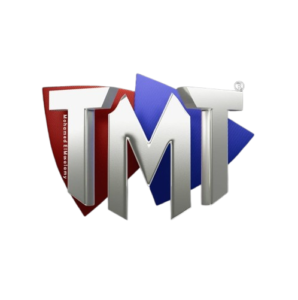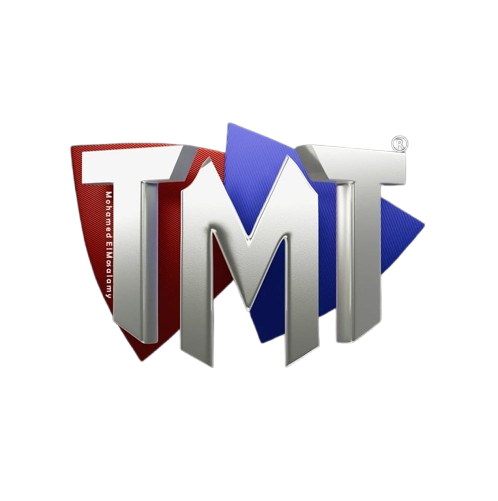James Robinson James Robinson
0 Course Enrolled • 0 Course CompletedBiography
C-OCM-2503 Test Certification Cost, C-OCM-2503 Exam Dumps Provider
P.S. Free & New C-OCM-2503 dumps are available on Google Drive shared by Itexamguide: https://drive.google.com/open?id=1Z3n0sgLo6NCGGswOnDqLqP0xxG6JWRSZ
There is a high demand for SAP Certified Associate - Organizational Change Management certification, therefore there is an increase in the number of SAP C-OCM-2503 exam candidates. Many resources are available on the internet to prepare for the SAP Certified Associate - Organizational Change Management exam. Itexamguide is one of the best certification exam preparation material providers where you can find newly released SAP C-OCM-2503 Dumps for your exam preparation.
SAP C-OCM-2503 Exam Syllabus Topics:
| Topic | Details |
|---|---|
| Topic 1 |
|
| Topic 2 |
|
| Topic 3 |
|
| Topic 4 |
|
>> C-OCM-2503 Test Certification Cost <<
2025 C-OCM-2503 Test Certification Cost & SAP Certified Associate - Organizational Change Management Unparalleled Exam Dumps Provider
Just like the old saying goes, motivation is what gets you started, and habit is what keeps you going. A good habit, especially a good study habit, will have an inestimable effect in help you gain the success. The C-OCM-2503 exam prep from our company will offer the help for you to develop your good study habits. If you buy and use our study materials, you will cultivate a good habit in study. More importantly, the good habits will help you find the scientific prop learning methods and promote you study efficiency, and then it will be conducive to helping you pass the C-OCM-2503 Exam in a short time. So hurry to buy the C-OCM-2503 test guide from our company, you will benefit a lot from it.
SAP Certified Associate - Organizational Change Management Sample Questions (Q23-Q28):
NEW QUESTION # 23
What is the difference between the high-level and the detailed change impact analysis?
- A. The high-level change impact analysis is facilitated by the change manager, whereas the detailed change impact analysis is facilitated by the project lead.
- B. The high-level change impact analysis is scheduled in the SAP Activate Realize phase, whereas the detailed change impact analysis is scheduled in the SAP Activate Explore phase.
- C. The high-level change impact analysis is conducted on a business unit level, whereas the detailed change impact analysis is conducted on a business process level.
- D. The high-level change impact analysis focuses on the as-is processes, whereas the detailed change impact analysis focuses on the to-be processes.
Answer: C
Explanation:
The high-level CIA provides a broad overview, while the detailed CIA dives deeper. Option B is correct because the high-level analysis assesses impacts at a business unit level (e.g., departments affected), while the detailed analysis drills down to specific processes (e.g., order-to-cash changes). Option A is incorrect-both are typically facilitated by the change manager. Option C is incorrect; both analyses consider as-is and to-be states, but the high-level is less granular. Option D is incorrect-high-level CIA occurs in Prepare/Explore, detailed in Explore/Realize, not as specified.
Extract from SAP OCM Concepts: High-level CIA is broad and unit-focused, while detailed CIA is process- specific (SAP Activate, OCM Workstream).
NEW QUESTION # 24
How does working with personas help to convey stakeholder-specific messages in cloud projects?
- A. Personas with relevant IT and process competencies for a specific stakeholder group support the communication of facts and figures, because the personas are considered to be credible experts for the communicated content
- B. Personas with similar demographics and attitudes of the represented stakeholder group allow you to address emotions instead of just conveying facts, because users identify with the persona and build empathy
- C. Personas representing innovators and visionaries within the represented stakeholder group trigger the reflection of communicated messages, because users are motivated to challenge their previous assumptions
- D. Personas that resemble opinion leaders of the represented stakeholder groups underline the communicated messages, because users unconsciously perceive the persona as very trustworthy
Answer: B
Explanation:
Personas in SAP OCM are fictional profiles representing stakeholder groups (e.g., "Finance UserAnna") to tailor communication. Option A is correct because personas mirroring demographics (e.g., age, role) and attitudes (e.g., skeptical) resonate emotionally with users, who see themselves in the persona. This empathy shifts focus from dry facts (e.g., "new system features") to feelings (e.g., "how it helps me"), enhancing message impact. For example, a persona like "Manager Mike, 45, cautious but open" can address fears while highlighting benefits, making communication relatable.
Option B is incorrect-opinion leader resemblance might build trust, but unconscious perception isn't the primary mechanism; identification is. Option C is incorrect; innovators/visionaries may inspire, but triggering reflection isn't the core purpose-adoption is. Option D is incorrect; personas aren't experts for facts-they' re tools for emotional connection, not technical credibility. SAP OCM uses personas to humanize communication.
"Personas reflecting stakeholder demographics and attitudes enable emotional messaging, fostering empathy and identification to drive adoption" (SAP OCM Framework, Persona Development).
NEW QUESTION # 25
What are typical causes for resistance in the cloud context? Note: There are 3 correct answers to this question.
- A. Belief that the new standard processes will not meet the business requirements
- B. Doubt that the works council will agree to the new business processes
- C. Concern regarding data privacy and security of cloud solutions
- D. Impression of losing control and autonomy over your own data and systems
- E. Fear of increasing costs for the maintenance of the IT infrastructure
Answer: A,C,D
Explanation:
Resistance in SAP cloud projects often stems from perceived risks. Option A is correct-data privacy/security concerns are common due to cloud hosting. Option B is correct; users resist if standard processes seem inadequate compared to legacy systems. Option C is correct as cloud solutions reduce local control, sparking resistance. Option D is incorrect-cloud typically lowers maintenance costs, not increases them. Option E is incorrect; works council doubts are situational, not a typical cause. SAP OCM identifies these as key resistance drivers to address.
"Resistance often arises from concerns over data security, process fit, and loss of control in cloud transitions" (SAP OCM Framework, Resistance Management).
NEW QUESTION # 26
What are the core elements of SAP's integrated enablement approach? Note: There are 2 correct answers to this question.
- A. Enablement planning, covering the enablement strategy, and the learning needs analysis for theproject team and users
- B. Enablement advisory, covering the enablement best practices, coaching, and evaluation
- C. Enablement infrastructure, covering the enablement administration, systems, and support
- D. Enablement execution, covering enablement project management, content development, and delivery
Answer: A,D
Explanation:
SAP's integrated enablement approach in OCM prepares users for cloud adoption. Option A is correct because enablement execution includes project management (coordinating efforts), content development (creating materials), and delivery (training sessions), forming the operational core. Option D is correct as enablement planning-strategy (defining approach) and learning needs analysis (identifying gaps for project team/users)-sets the foundation for execution.
Option B is incorrect; advisory (best practices, coaching) supports but isn't a core element-it's external guidance. Option C is incorrect; infrastructure (administration, systems) is logistical, not a defining component. SAP OCM focuses on planning and execution as the heart of enablement.
"SAP's enablement approach comprises planning (strategy and needs analysis) and execution (management, content, delivery) to drive user readiness" (SAP Activate, Integrated Enablement Framework).
NEW QUESTION # 27
Which general recommendations help to deliver change management successfully? Note: There are 2 correct answers to this question.
- A. Calculate the return on investment (ROI) for change management activities
- B. Be user-centric and empathetic
- C. Establish trustful cooperation with project management
- D. Only use standardized tools and templates
Answer: B,C
Explanation:
Successful change management in SAP OCM hinges on people and collaboration. Option C is correct-being user-centric and empathetic (e.g., addressing a user's fear of change with tailored support) ensures adoption by meeting emotional and practical needs, not just pushing info. Option D is correct as trustful cooperation with project management-e.g., aligning OCM with milestones-integrates efforts, like syncing training with testing, avoiding silos.
Option A is incorrect-standard tools help, but flexibility (e.g., custom workshops) is key; rigidity limits impact. Option B is incorrect-ROI calculation is impractical for OCM's qualitative benefits (e.g., morale); focus is on outcomes, not finance. SAP OCM thrives on empathy and partnership.
"Deliver change management successfully by being user-centric and empathetic, and fostering trustful cooperation with project management" (SAP OCM Framework, Success Recommendations).
NEW QUESTION # 28
......
After you purchase our C-OCM-2503 study material, you must really absorb the content in order to pass the exam. Our C-OCM-2503 guide quiz really wants you to learn something and achieve your goals. And it is easy and convenient for you to make it. For we have three versions of the C-OCM-2503 Exam Questions for you to choose: the PDF, Software and APP online. So that you can study at any time you like. And the content of the C-OCM-2503 learning braindumps is also simplified for you to easily understand.
C-OCM-2503 Exam Dumps Provider: https://www.itexamguide.com/C-OCM-2503_braindumps.html
- C-OCM-2503 Free Sample 🖐 New C-OCM-2503 Test Guide 🕧 Exam C-OCM-2503 Reference 🚞 Search for ⏩ C-OCM-2503 ⏪ and download exam materials for free through ⏩ www.getvalidtest.com ⏪ 🐡Practice C-OCM-2503 Exam Pdf
- 2025 Newest C-OCM-2503 Test Certification Cost | C-OCM-2503 100% Free Exam Dumps Provider 🕞 ✔ www.pdfvce.com ️✔️ is best website to obtain ▶ C-OCM-2503 ◀ for free download 📟Valid C-OCM-2503 Study Plan
- Practice C-OCM-2503 Exam Pdf 🐬 Practice C-OCM-2503 Exam Pdf 🌒 New C-OCM-2503 Test Guide 📏 Immediately open [ www.prep4away.com ] and search for ☀ C-OCM-2503 ️☀️ to obtain a free download 🏎C-OCM-2503 Reliable Test Tutorial
- Fast-Download C-OCM-2503 Test Certification Cost - Pass C-OCM-2503 Once - First-Grade C-OCM-2503 Exam Dumps Provider 🐙 Easily obtain [ C-OCM-2503 ] for free download through [ www.pdfvce.com ] ⏹Latest C-OCM-2503 Test Format
- Pdf C-OCM-2503 Free 😐 Latest C-OCM-2503 Practice Questions 📨 C-OCM-2503 Demo Test 😀 Open ➠ www.free4dump.com 🠰 enter ⇛ C-OCM-2503 ⇚ and obtain a free download 🏗New C-OCM-2503 Test Prep
- C-OCM-2503 Test Certification Cost - Leading Offer in Qualification Exams - SAP SAP Certified Associate - Organizational Change Management ⬆ Enter ▷ www.pdfvce.com ◁ and search for 【 C-OCM-2503 】 to download for free 🟫Dumps C-OCM-2503 Discount
- C-OCM-2503 Test Certification Cost - Leading Offer in Qualification Exams - SAP SAP Certified Associate - Organizational Change Management 🍫 Enter ➤ www.exams4collection.com ⮘ and search for ▷ C-OCM-2503 ◁ to download for free 🦳Latest C-OCM-2503 Dumps Book
- C-OCM-2503 Demo Test ⚾ Dumps C-OCM-2503 Discount 🚞 Latest C-OCM-2503 Dumps Book 👓 Open { www.pdfvce.com } enter ⇛ C-OCM-2503 ⇚ and obtain a free download 🪕Test C-OCM-2503 Valid
- 100% Pass 2025 SAP Newest C-OCM-2503: SAP Certified Associate - Organizational Change Management Test Certification Cost 🧹 Simply search for ▶ C-OCM-2503 ◀ for free download on ( www.testsimulate.com ) 🚠New C-OCM-2503 Test Guide
- Exam C-OCM-2503 Reference 🤪 New C-OCM-2503 Test Prep 📢 Latest C-OCM-2503 Test Format 🔮 Open ➽ www.pdfvce.com 🢪 and search for ➤ C-OCM-2503 ⮘ to download exam materials for free 🦗Pdf C-OCM-2503 Free
- C-OCM-2503 Reliable Test Tutorial 🏆 Latest C-OCM-2503 Dumps Book 📸 C-OCM-2503 Learning Materials ☢ Easily obtain ▛ C-OCM-2503 ▟ for free download through ⏩ www.examsreviews.com ⏪ 🍾Valid Test C-OCM-2503 Fee
- C-OCM-2503 Exam Questions
- rochiyoga.com karlwal370.finestforum.com thephilatherapynetwork.com lms.statmodeller.com shufaii.com dopementor.com jaspreetkaur.in exenglishcoach.com shinchon.xyz skillplus.lk
What's more, part of that Itexamguide C-OCM-2503 dumps now are free: https://drive.google.com/open?id=1Z3n0sgLo6NCGGswOnDqLqP0xxG6JWRSZ

